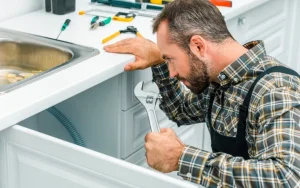
High precision current refers to an accurately controlled and measured electrical current with a minimal margin of error or deviation. Measuring high-precision current needs advanced technology to do the work operation accurately. One common type of transducer used for high-precision current measurement is the current transducer or current sensor. These devices provide a means to measure current by sensing the magnetic field generated by the current flow.
How to use the current sensor?
To use a current transducer, follow these general steps:
- Determine the type of current sensor. Current transducers come in various types, such as:
- Hall effect transducers
- Rogowski coils
- current transformers

Identify the specific type you are working with.
- Understand the specifications. Familiarize yourself with the specifications of the current transducers, including their voltage output range, current range, accuracy, frequency response, and any other relevant parameters. The information is provided in the manufacturer’s datasheet.
- Power the transducer. Depending on the type of transducer, it may require a power supply or operate on a current loop. Ensure that you provide the necessary power according to the specifications.
- Connect the transducer. Connect the transducer to the circuit or conductor carrying the current you want to measure. The specific connections will depend on the type of transducer. Refer to the datasheet or manufacturer’s instructions for the correct wiring configuration.
- Set up the output. Determine how you want to receive the output signal from the transducer. Some common options include analog voltage output, current output, or digital output. Make the appropriate connections to the output terminals of the transducer.
- Calibrate if necessary. Some transducers may require calibration to ensure accurate measurements. Consult the manufacturer’s instructions on how to calibrate the transducer. Calibration typically involves applying a known current and adjusting the transducer’s output accordingly.
- Measure the current. Once the transducer is properly connected and calibrated, you can start measuring the current. Monitor the output signal using a voltmeter, ammeter, data acquisition system, or any other suitable measurement device.
- Interpret the output. Convert the output signal from the transducer into the corresponding current value using the provided specifications and calibration data. Consider any scaling factors or signal conditioning required to obtain accurate measurements.
These steps provide a general overview of using current transducers. The specific instructions may vary depending on the type and model of the transducer you are working with. Always refer to the manufacturer’s documentation and guidelines for detailed instructions and safety precautions.
Using current transducers involves understanding their specifications, providing the necessary power, connecting it correctly to the circuit or conductor carrying the current, setting up the output, and potentially calibrating it for accurate measurements. Following the manufacturer’s instructions and guidelines is crucial for proper usage and ensuring safety. Using a current sensor correctly can measure current and obtain valuable information about electrical systems or devices.






